Snapping Scapula
Snapping scapula is the descriptive diagnosis for a range of factors that cause painful clicking, grinding, clunking or 'snapping' of the shoulder blade.
The scapula (shoulder blade) is a broad triangular bone attached to the body by strong muscles. It forms the foundation for movements of the arm. Over one third of shoulder movement occurs between the scapula and the ribcage. This movement occurs as a result of frictionless fluid-filled sacs, known as bursae. These form the articulation known as the scapulothoracic joint.
The green area indicates the scapulothoracic articulation, between the scapula and thorax
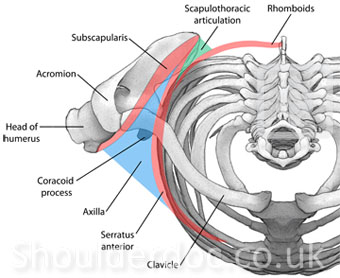
Cross section of the shoulder showing the Bursae that make up the scapulothoracic articulation - the supraserratus and infraserratus bursae:
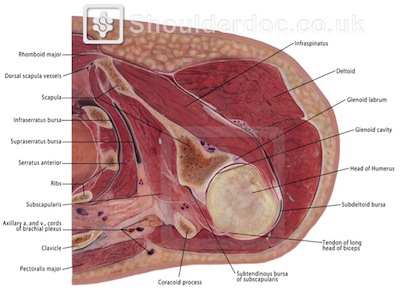
Painful snaping of the scapulothoracic joint may be caused by:
- Abnormal movement of the joint, secondary to shoulder instability, chronic shoulder pain or brachial neuritis
- Exostosis - a bony lump forming a 'rhino horn' at the top bursa
- Inflammation of the bursa from inflammatory conditions, such as rheumatoid disease
- Muscle tears around the bursa
- Soft tisue lumps near the bursa
- Fracture of the scapula or ribs

Prominent left scapula due to exostosis
Click Here for Video
Sometimes clicking in the scapula can be transmitted from the glenohumeral joint, so it is essential to exclude a labral tear and other causes of clicking in the glenohumeral joint. Click here for Video
X-rays are useful to exclude a bony lump and a special view of the scapulothoracic joint is helpful. However, often these cannot be easily seen and an MR scan or CT scan will be required.
.jpg)
Rhino horn exostosis superior border of scapula
Treatment will depend on the cause. Therefore accurate diagnosis is the most important step in treatment. If no lump or lesion is found, then physiotherapy and injections are the main treatments. Physiotherapy is directed at retraining the normal rhythm of the scapula moving muscles and improving stability of the scapula on the body.
Injections of the bursa are helpful to reduce the inflammation of the bursa.
Injection of the scapulothoracic bursa:
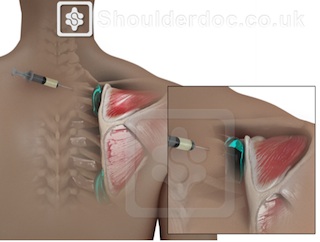
Surgery involves removal of the bursa and the bony lump (if present). This may be performed arthroscopically or by open surgery. This surgery is rare and therefore should be undertaken by a specialist shoulder surgeon.
Thoracoscapular arthroscopy:
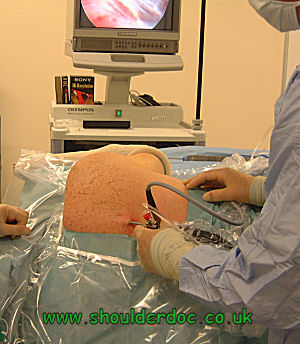
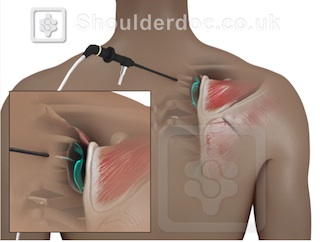
Outcomes of treatment are good, as long as the diagnosis is correct.


